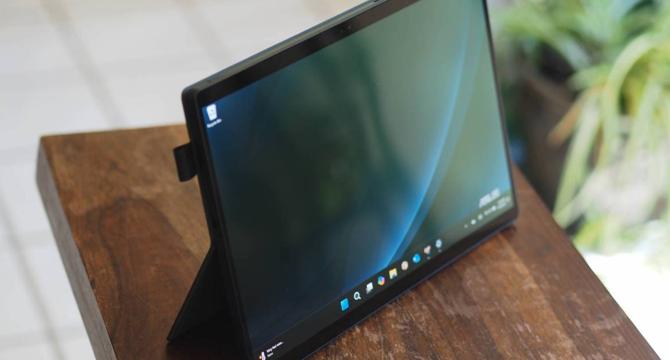Digitaltrends
1M
54

Image Credit: Digitaltrends
This Asus tablet nearly beats the Microsoft Surface Pro — and it’s $700 cheaper
- Asus has introduced a competitor to Microsoft Surface Pro 11, the ProArt PZ13, which offers up some real competition. It also has great performance and battery life, except it costs a lot less upward of $700 less. The Surface Pro 11 has several options. It's faster than the ProArt PZ13, available in different configurations and color options.
- Both tablets use Qualcomm's latest Snapdragon X chipsets. In practice, though, CPU differences aren't likely to be noticeable, and neither GPU is fast enough for gamers and creators. The ProArt PZ13 is limited to Plus X1P-42-100 version with eight cores running at up to 3.2GHz and boosting up to 3.4GHz. Whereas, The Surface Pro 11 can be had with the Plus X1P-64-100 with 10 cores running at 3.4GHz and with a 3.8 TFLOPS Adreno GPU.
- There is a vast difference in design, with a built-in kickstand in Surface Pro 11. The kickstand magnetic attaches to the back of ProArt PZ13, adding some thickness and weight. Surface Pro 11's keyboard is incredibly well-designed, with a magnetic tilt option that holds it up at an angle, which the ProArt PZ13's keyboard lacks.
- Both laptops have the same number of ports, specifically two USB4 connections, with different added features like microSD card reader, and nano SIM slot for 5G cellular connectivity. The Surface Pro 11's Surface Pen 2 has haptic feedback that interacts with the display for a more natural writing and drawing feel. The ProArt PZ13's active pen doesn't have the same feature.
- The Surface Pro 11 has IPS and OLED display options, both 13.0-inch 3:2 2.8K panels running at 120Hz. The ProArt PZ13 has a 13.3-inch 16:10 2.8K OLED display that runs at a slower 60Hz. Both are excellent displays, with the usual inky blacks. They are excellent for all users, making great streaming media machines.
- Both tablets by themselves are around the same size, which is to say they're light enough and thin enough to hold in your hands for digital inking and art, that is, as much as 13-inch tablets can be. In terms of battery life, the ProArt PZ13 has a larger battery at 70Watt-hours versus 48 or 53 Watt-hours on Surface Pro 11.
- However, the Surface Pro 11 is faster than the ProArt PZ13, features a built-in kickstand & a magnetic tilt option that holds the keyboard up at an angle. The Surface Pro 11's Surface Pen 2 has haptic feedback that interacts with the display for a more natural writing and drawing feel. The Surface Pro 11 offers plenty of configurations with color options, though it is more expensive.
- On the other hand, the ProArt PZ13 is cheaper than the Surface Pro 11 model by $700, includes a keyboard, and features a 13.3 inches 2.8K OLED display. Additionally, It has excellent battery life, and both devices have fast neural processing units (NPUs) supporting faster on-device AI performance and Microsoft Copilot+ PC support.
- In conclusion, Surface Pro 11 is better, more refined with some nice features, and has a more cohesive design than ProArt PZ13. It depends on your budget, and you save around $700 after purchasing the Surface Pro 11 with the ProArt PZ13. Nonetheless, Both ProArt PZ13 and Surface Pro 1 are excellent Windows tablets that represent the current state of the art.
- Both laptops are great for everyday productivity work and will provide an excellent viewing experience with their OLED displays. The ProArt PZ13 is the more affordable option, whereas the Surface Pro 11 comes with additional features. Both are excellent options for 2-in-1 laptops.
Read Full Article
3 Likes
For uninterrupted reading, download the app